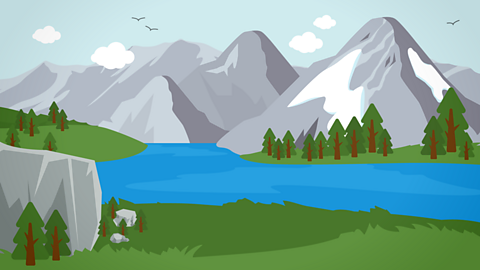What is a National Park?
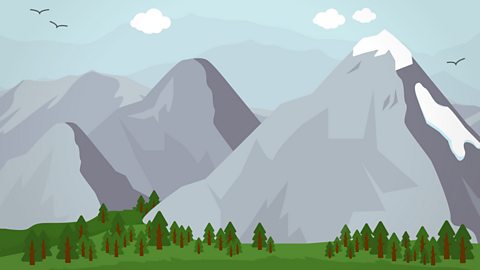
A National Park is an area of the UK countryside protected by law.

Watch: Explore the UK's National Parks
Learn about how the first National Park was created.
When you travel through the UK, you notice lots of different types of landscape - farmland, forest, wetlands, woodland, coastal regions and much more.
But did you know that some areas of land are so special that there are laws to protect them and look after them? We call these areas National Parks.
Hi, I’m Tianna and I’m in the beautiful Yorkshire Dales National Park. I’m in North Yorkshire, but the park spreads across Cumbria and Lancashire as well.
It’s known for its huge valleys which were mainly caused by glaciers moving along smaller river valleys. The word ‘dale’ is an old term that means ‘valley’.
Like all National Parks, it’s a large defined area of land that has laws in place to make sure its landscape and wildlife are protected, for nature’s benefit and ours.
It’s healthy for us to connect with nature!
If we didn’t protect some of the land, lots of animals would have nowhere to live and we’d have nowhere to visit nature.
There are volunteers and workers who look after the parks, and some locals have jobs that depend on the land.
The scenery, plants and animals are often different in each National Park. And some of them have played a big part in their creation…
Further south is the Peak District National Park - it’s smaller than the Yorkshire Dales National Park and its valleys aren’t as wide. But it was the first ever UK National Park. Before that, lots of it was private land and the public weren’t allowed to visit.
It became protected by law in 1951, after it was decided that every person living in the UK has the right to enjoy and roam the beautiful outdoors. But some people believe that might not have happened without a protest.
If you go on the Kinder Scout mass trespass walk, you will follow in the footsteps of 500 walkers who, around 90 years ago, trespassed on private land from Hayfield all the way to Kinder Scout.
They did it to highlight how unfair it was that the public couldn’t enjoy the open country.
Their success helped create National Parks. There are now 15 of them in the UK - two in Scotland, three in Wales and 10 here in England.
I’m so glad that there are laws and people in place to protect our parks, for now and in the future. So, where is your nearest National Park and what makes it special?
Why do we have National Parks?

National Parks are areas of the UK countryside, including some towns and villages, that are protected by law.
These areas are special, because of their wildlife, nature and cultural heritageSomething important to people passed down to future generations. For example paintings, statues and buildings, traditions, crafts and skills, and the natural environment..
People who live there can help decide how to look after them.
The purpose of National Parks in the UK is to:
Look after the features and characteristics of the area.
Make changes to improve the area.
Help people understand why the area is special, so that they can enjoy it and appreciate it more.

UK National Parks
The UK has 15 National Parks. There are:
- 10 in England
- 3 in Wales
- 2 in Scotland
- None in Northern Ireland
The first one was the Peak District in 1951; the most recent National Park is the South Downs, which was designated in 2010.
Some different examples of the UK's national parks are:
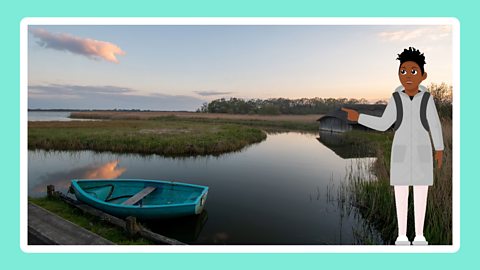
Image caption, The Broads - England
The Broads are a system of waterways and small lakes in Norfolk. Some are used for boating and sailing. This wetland is home to a variety of rare plants, birds and insects.
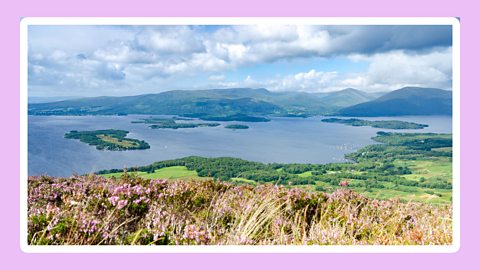
Image caption, Loch Lomond and the Trossachs - Scotland
Scotland’s first National Park is famous for its lochs (lakes), mountains and coastline. Many visitors come here for walking, fishing and water activities, because of how close it is to Glasgow.
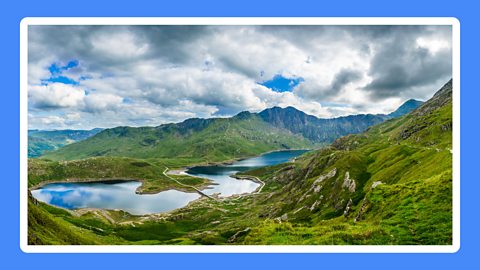
Image caption, Snowdonia - Wales
This National Park is the largest in Wales and is home to Yr Wyddfa or Snowdon, the tallest mountain in Wales. There are many mountain ranges and also a rare plant called the Snowdon Lily is found on its highest peaks.
1 of 3
Case Studies
Both the Peak District and the Yorkshire Dales National Parks are located in England. They offer a wide variety of landscapes, and both are known for different qualities.
The Peak District
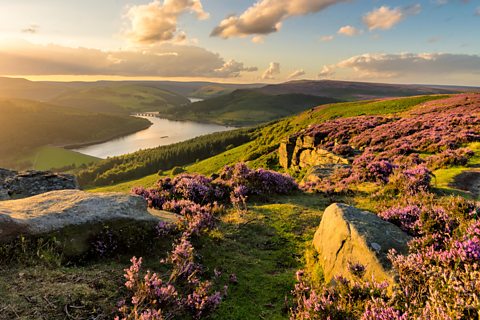
- It is the UK's first National Park.
- As well as providing walking routes on the hills, people can cycle and walk on a trail along the old railways which lead through tunnels.
- Derwent Dam can be found here. This was built to provide water to people who live around the area.

The Yorkshire Dales

- The Yorkshire Dales has 8000 km of dry-stone walls in the area. The walls are built by farmers to show what land belongs to them, or to stop animals such as cows and sheep moving to other fields.
- There are a few waterfalls in the Yorkshire Dales, such as Aysgarth Falls.
- It is also home to the longest system of caves in the UK.

Activities
Quiz: National parks
Tap and find: National parks of the UK
SATs preparation resources. activitySATs preparation resources
Get ready for the SATs papers with videos, activities, quizzes and games to refresh your knowledge and practise your skills.

More on Geography of the UK
Find out more by working through a topic
- count31 of 32
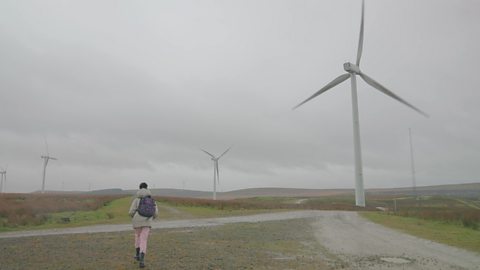
- count32 of 32

- count1 of 32

- count2 of 32
